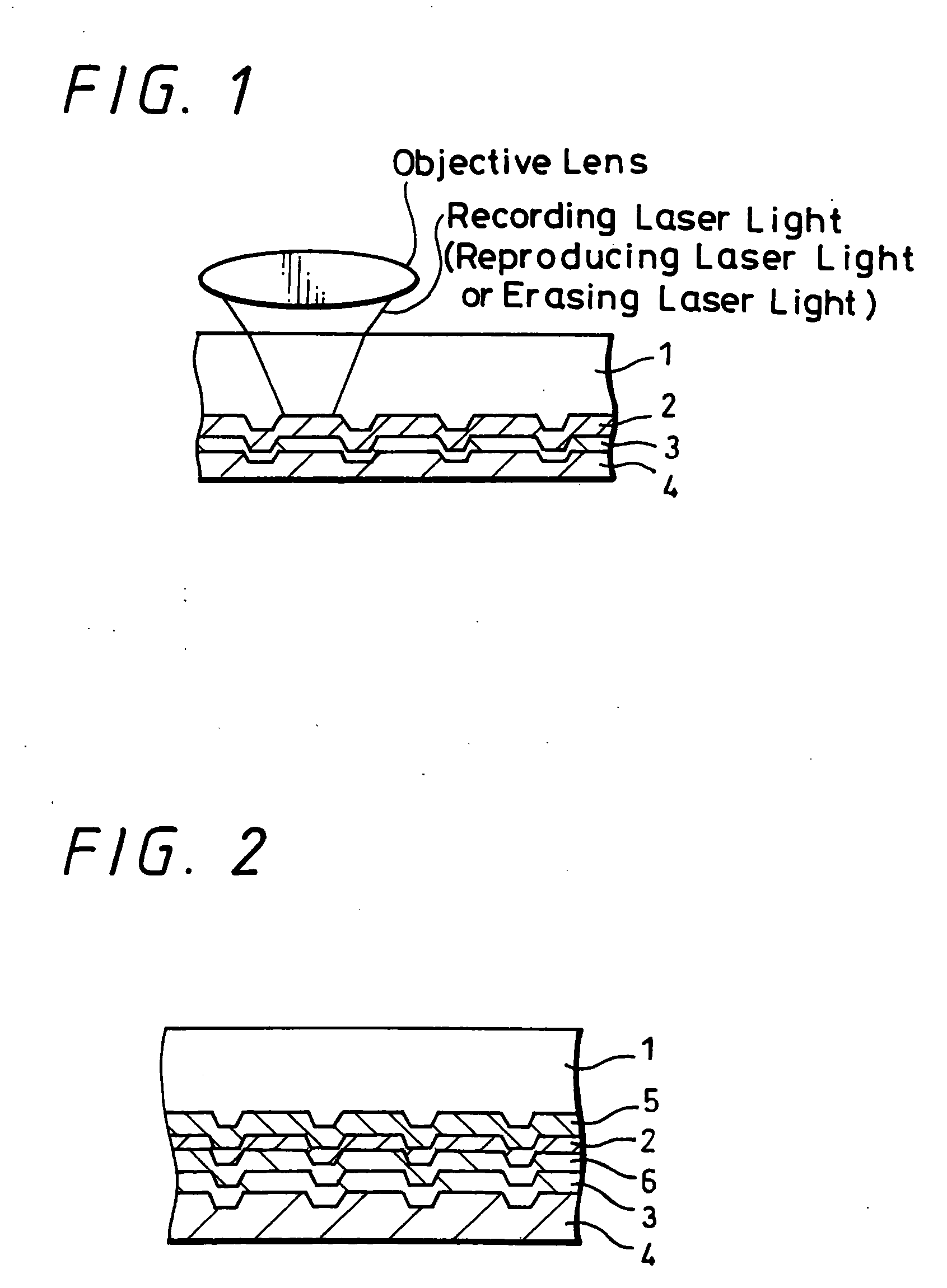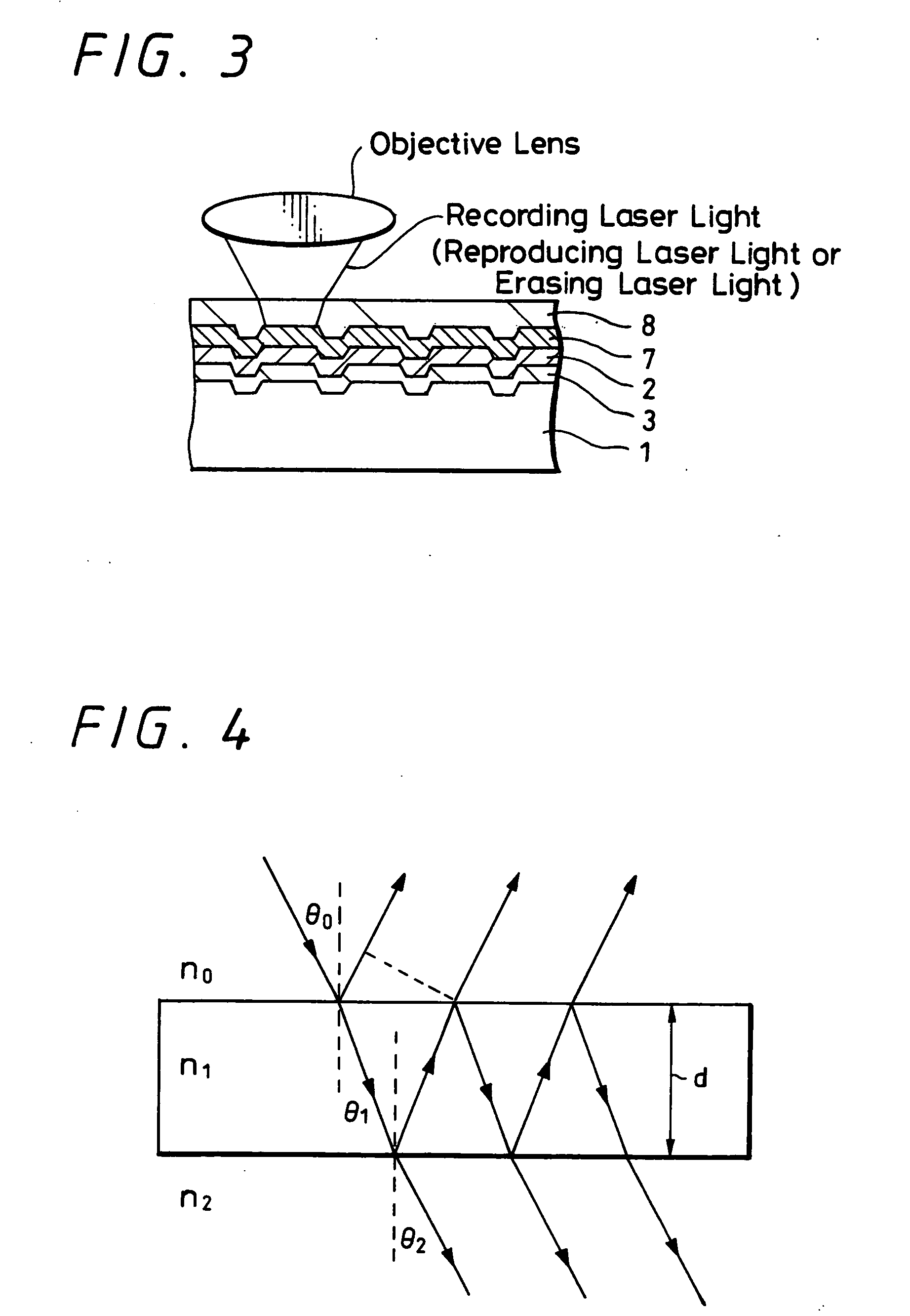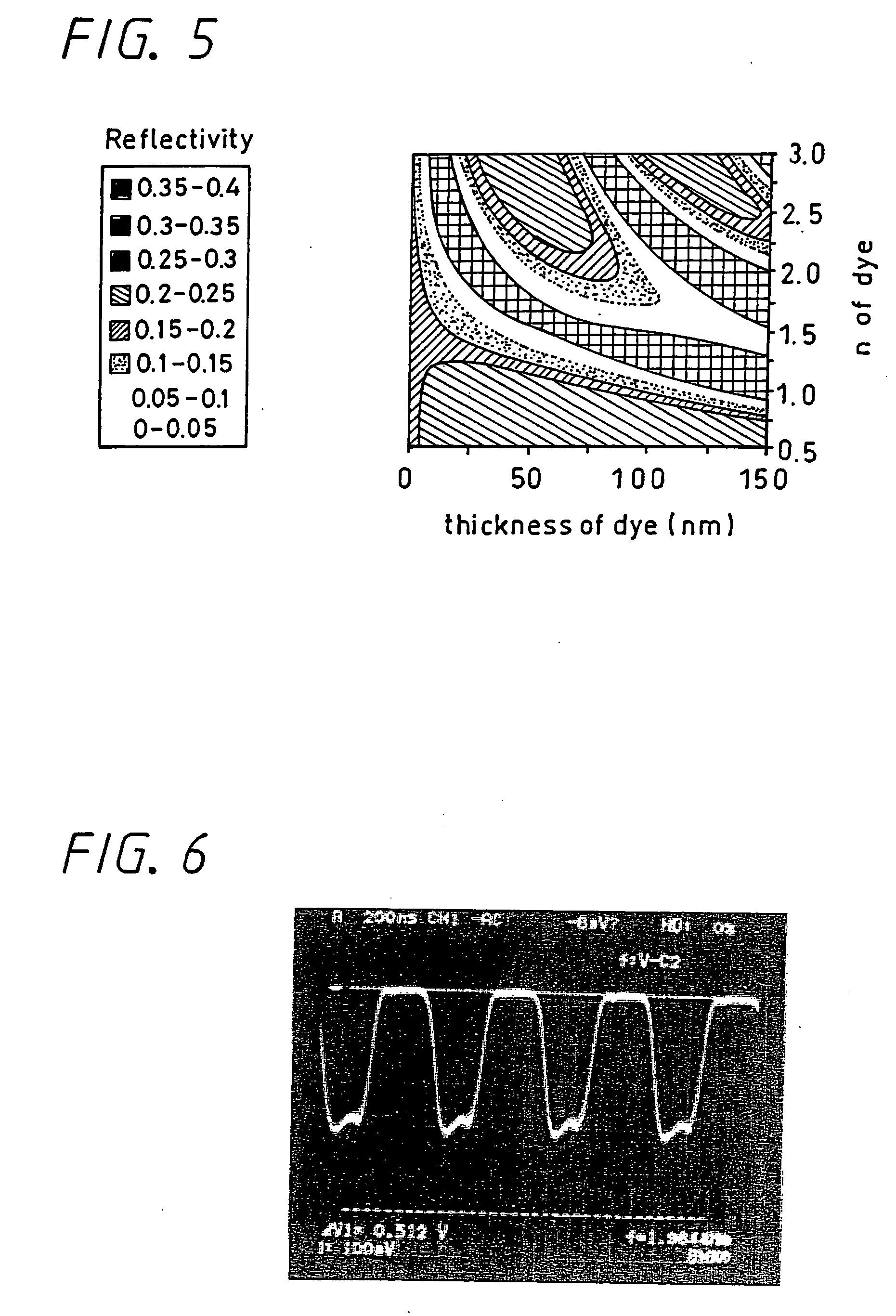Rewritable optical information recording medium, recording and reproducing methods, as well as recording and reproducing apparatus
a technology of optical information and recording medium, which is applied in the direction of optical recording/reproducing/erasing methods, instruments, and thermal imaging, etc., can solve the problems of difficult to manufacture inexpensive optical recording medium, difficult to achieve long-time recording stability, and toxic alloys, etc., to achieve low viscosity, less power, and more power
- Summary
- Abstract
- Description
- Claims
- Application Information
AI Technical Summary
Benefits of technology
Problems solved by technology
Method used
Image
Examples
embodiment 1
[0344] This embodiment is an example of a DVD using blue laser of wavelength λ=405 nm.
[0345] A polycarbonate substrate the dimensions of which are 0.6 mm in thickness and 120 mm in outer diameter has been made from a stamper with grooves in the shape of 0.6 μm in pitch, 50 nm in groove depth and 0.28 μm in groove width by an injection molding method. The film structure of this example is the same as that shown in FIG. 1. Tetraazaporphyrin dye shown as recording layer 2 by General Formula (A) has been deposited by a vacuum evaporation method on grooves on the substrate so that the film thicness becomes 60 nm. The refractive index and the absorption coefficient of the recording layer 2 were n=1.8 and k=0.05 at 405 nm, respectively. Subsequently, an optical recording medium of the same outer shape as the DVD has been made by depositing a silver reflective layer 3 of 100 nm in thickness on this recording layer by a sputtering method, then depositing UV curing resin [SD17] (produced by...
embodiment 2
[0348] This embodiment is also an example of a DVD using blue laser of wavelength λ=405 nm.
[0349] The same substrate, organic dye recording film, silver reflective film and protective film were used. The film structure of this example is shown in FIG. 2. The difference between this example and Embodiment 1 is that SiO2 of 30 nm in film thickness is deposited by a sputtering method between the substrate 1 and the recording film 3 and between the recording film 3 and the reflective film 5 as a transparent protective layer 5 and as a transparent protective layer 6, respectively. The initial reflectance of the disc was 12%, which virtually corresponds to the calculated value.
[0350] A simple repetitive signal corresponding to the pit length of 0.5 μm was recorded on the same condition as Embodiment 1.
[0351] When the recorded portion was reproduced at a reproducing power of 0.5 mW, the C / N ratio=59 dB was confirmed. FIG. 9 shows the RF signal output concerning this recording pattern.
[...
embodiment 3
[0353] This embodiment is an example of a DVR (an optical disc in which recording and reproduction are performed through a light-transmissive layer of 10 to 177 μm in thickness) using blue laser of wavelength λ=405 nm.
[0354] An example of a film structure in FIG. 3 concerning a recording medium capable of favorably recording and reproducing in an optical system of wavelength 405 nm and NA=0.85 is shown. Here note that guide grooves with a track pitch of 0.64 μm are formed in a polycarbonate substrate 1 and the width of the guide grooves is set to 50% so that recording can be done both on lands and grooves. Specifically, the track pitch is virtually 0.32 μm. Also, the depth of each groove is 40 nm. A silver alloy reflective film 2 of 12 nm in thickness was deposited thereon by a sputtering method, and diazaporphyrin dye shown by General Formula (B) written below is used to form an organic dye film 3 by a vacuum evaporation method.
[0355] The organic dye film was 75 nm in thickness...
PUM
 Login to View More
Login to View More Abstract
Description
Claims
Application Information
 Login to View More
Login to View More - R&D
- Intellectual Property
- Life Sciences
- Materials
- Tech Scout
- Unparalleled Data Quality
- Higher Quality Content
- 60% Fewer Hallucinations
Browse by: Latest US Patents, China's latest patents, Technical Efficacy Thesaurus, Application Domain, Technology Topic, Popular Technical Reports.
© 2025 PatSnap. All rights reserved.Legal|Privacy policy|Modern Slavery Act Transparency Statement|Sitemap|About US| Contact US: help@patsnap.com



